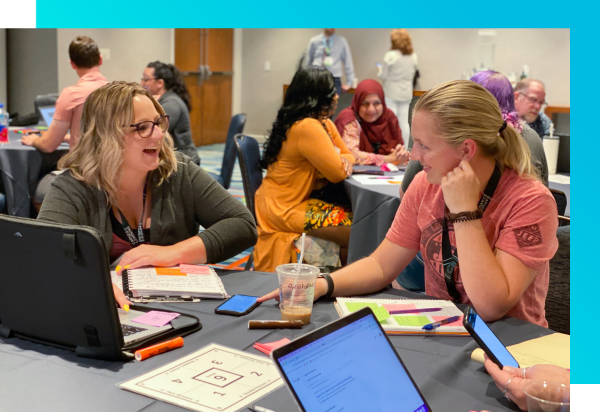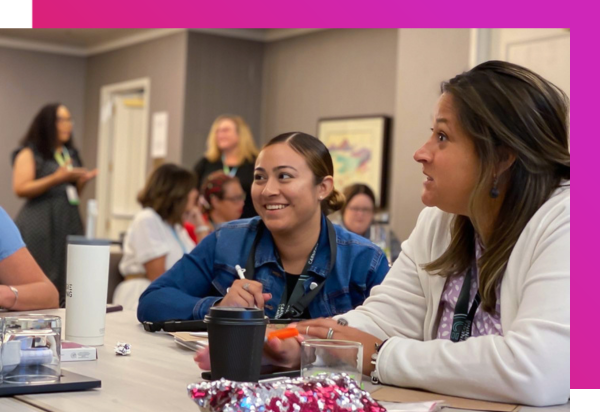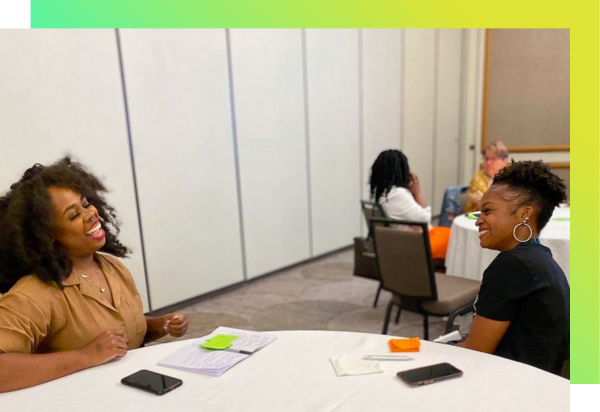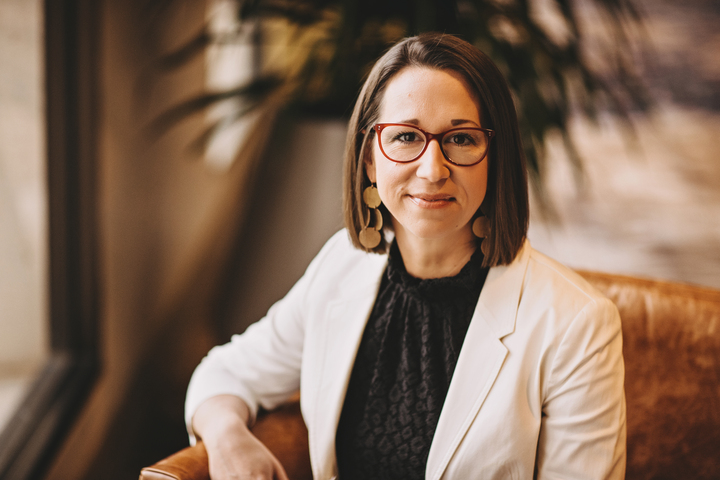Foster teacher knowledge and joy with evidence-based learning strategies.

It’s no secret that, among teachers, professional development doesn’t have the best reputation.
And I get it.
During my days as an 8th-grade math teacher, I sat through my share of boring or not-very-helpful PD.
But it doesn’t have to be that way.
I’ve seen some truly stellar professional development in my time as Chief Services Officer at Carnegie Learning. The kind that’s actually productive, empowering teachers and reigniting their passion and purpose.
Here’s what researcher Linda Darling Hammond tells us are the six most important components of effective professional development. It’s the criteria we use when designing all our professional learning services, including The National Institutes.
The features of good professional development
I still shudder a little when I think about the reading/writing workshop I attended as a math teacher. It could have been great; I would’ve loved to learn how to teach more literacy skills in my math class. But the workshop clearly targeted English teachers and therefore not helpful to me.
Professional development should focus on teaching methods, strategies, and content specific to teachers' specific classroom context. This means subject-specific learning for middle and high school teachers and grade-level learning for elementary school teachers.
Middle school math teachers should have the opportunity to discuss best practices for teaching lines of best fit. Elementary teachers should have time to explore Cuisenaire rods, pattern blocks, and strips to model fractions. High school English teachers should practice analyzing poems and collaboratively draft discussion questions to drive student discourse.
These are just a few examples of what relevant, subject-specific professional learning could look like, but you get the point.
Whatever form it takes, PD connected to a teacher’s daily practice has a far greater impact.
Teachers know that active learning that honors student input is the most effective way to engage learners. Active learning is successful because it “uses not only hands-on and minds-on approaches but also hearts-on ones.” Again and again, we hear that if we want to engage students, we must first involve them—holistically.
Teachers deserve the same high-quality learning experiences that students do. Additionally, how teachers learn is often more important than what they learn. Why? Because we teach the way we were taught.
Effective professional learning should model pedagogical approaches and let teachers repeatedly practice implementing them—not just provide content. This is why in our Learn by Doing® model, math teachers work through problems with the same materials their students use. ELA teachers closely read, discuss texts with each other, and experiment with new writing prompts.
Some administrators would like to give their teachers more hands-on learning, but don’t feel like they have enough time. As a result, they provide the majority of professional development through lectures. I would counter that sit-and-get PD is so unproductive it’s not worth doing at all. If you don’t have the time to allow for active learning, it might be time to rethink your approach to professional learning.

Professional learning is not something you do to teachers; it’s something you do with them.
Collaborative professional learning can take many forms. These include learning walks, lesson study, student work analysis, labsite learning, or workshops (among others).
Productive PD must create safe spaces for educators to learn together and share their joys and challenges. Professional learning must include plenty of time for educators to talk, listen, and learn from each other.
Educators should also have opportunities to observe each other’s classes as well as plan and troubleshoot together. They should also have time to identify improvements to instruction and school culture.
Teachers only change how they teach after they’ve experienced success with that strategy in their own classroom with their own students.
If a particular lesson or technique fails the first time a teacher tries it, he or she is likely to abandon the strategy.
This is where the magic of job-embedded coaching comes in. Supported teachers are less likely to give up when a new strategy isn't perfect on the first try. When teachers can reflect, diagnose missteps, and celebrate successes, they are more likely to master a new strategy.
Some studies suggest that teachers need 50 hours of practice before feeling comfortable with a new technique. The only way to get professional learning to stick is to get expert coaches into classrooms where the rubber meets the road.
On-site coaching and support help teachers feel confident implementing something new. Teachers can refine and personalize a lesson, approach, or technique until it becomes part of their practice. And when teachers can expand their toolboxes, they aren’t the only ones who benefit—students do too.
Almost any teacher will tell you that reflection is critical if they want to improve their teaching.
And, in the same breath, they will tell you that there is no time to reflect.
Teachers aren’t wrong about this. Reflection time should be part of your professional learning, whether individually, in groups, and with a coach
What’s more, processes of giving, receiving, and incorporating feedback need to be standard components of professional learning.

Professional learning is not a single event; it’s an ongoing process. Schools that create a culture of continuous learning will improve teachers’ sense of purpose, connectedness, and joy.
The single workshop model assumes that the problem teachers face is a lack of knowledge about best practices. The thinking goes that if they are just told what to do, their practices will change.
Of course, things are never that simple. In most cases, teachers already know best practices in theory.
So the greatest challenge teachers face is implementing newly learned strategies based on best practices. This implementation phase is where professional learning should be the most consistent and collaborative.
Of course, like so many other aspects of teaching, strong relationships are key to making ongoing support work. Coaches and facilitators need to establish trust and rapport with teachers. This allows them to have positive classroom visits, debriefs, or co-teaching.
Effective professional development is an investment in your people
As a team leader, I am sometimes distracted by annual goals, deadlines, and to-do lists.
And when this happens, I don’t devote enough time to the growth and development of the people under my care. Nothing else matters if I have not first invested in my team and ensured that they find joy and purpose in their work. They must be equipped with the tools they need to excel.
I provide growth and collaboration opportunities and time to practice new skills so my teachers can better do their jobs.
Even when things get tough.
When done correctly, professional development is an investment with exponential returns.
Effective professional development really can spark joy
At Carnegie Learning, we believe in educators.
We know they are creating the next generations of thinkers and change-makers. We provide personalized, ongoing professional learning experiences that inspire, empower, and honor all learners.
Want to learn more about building a professional development program that cultivates joy and retains teachers? Check out my free webinar, “Bring Back the Love of Teaching and Combat Burnout by Investing in Professional Learning.”
Happy viewing, and here’s to your teachers!

Kasey is a passionate leader striving to make a big impact on education across the country. She is an advocate for student thought and is driven to support educators as they create their own classrooms full of communication, collaboration, creativity, and critical thinking.
As Chief Services Officer, Kasey is now living out her passion by leading the superb work of Carnegie Learning’s professional learning and tutoring groups in schools and districts across the US.
Before joining Carnegie Learning full-time in 2011, Kasey taught middle and high school mathematics for eight years and served as a mathematics consultant and coach for the largest educational cooperative in Kentucky.
Explore more related to this authorProfessional learning is not something you do to teachers; it’s something you do with them.
Kasey Bratcher, Chief Services Officer, Carnegie Learning

Filed Under
